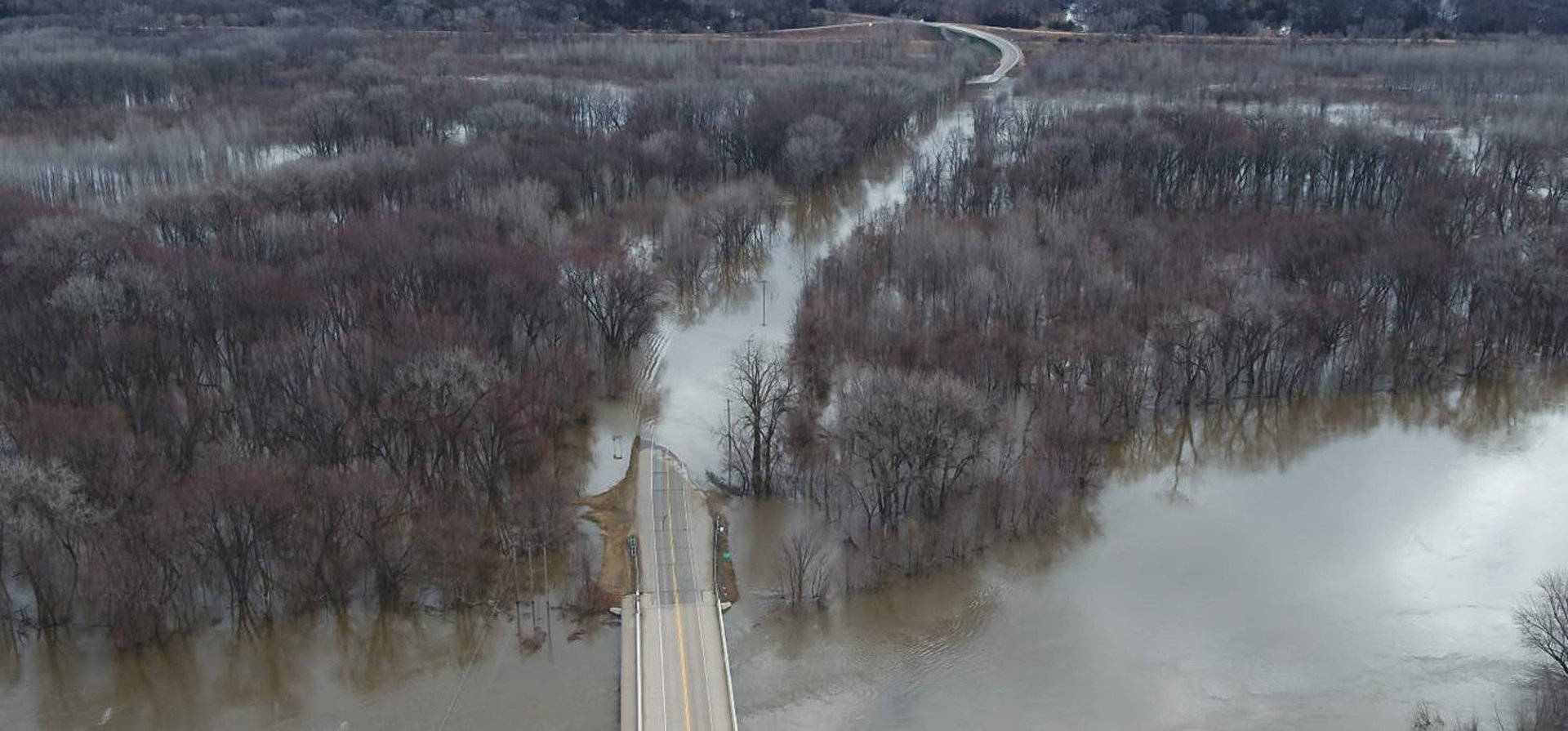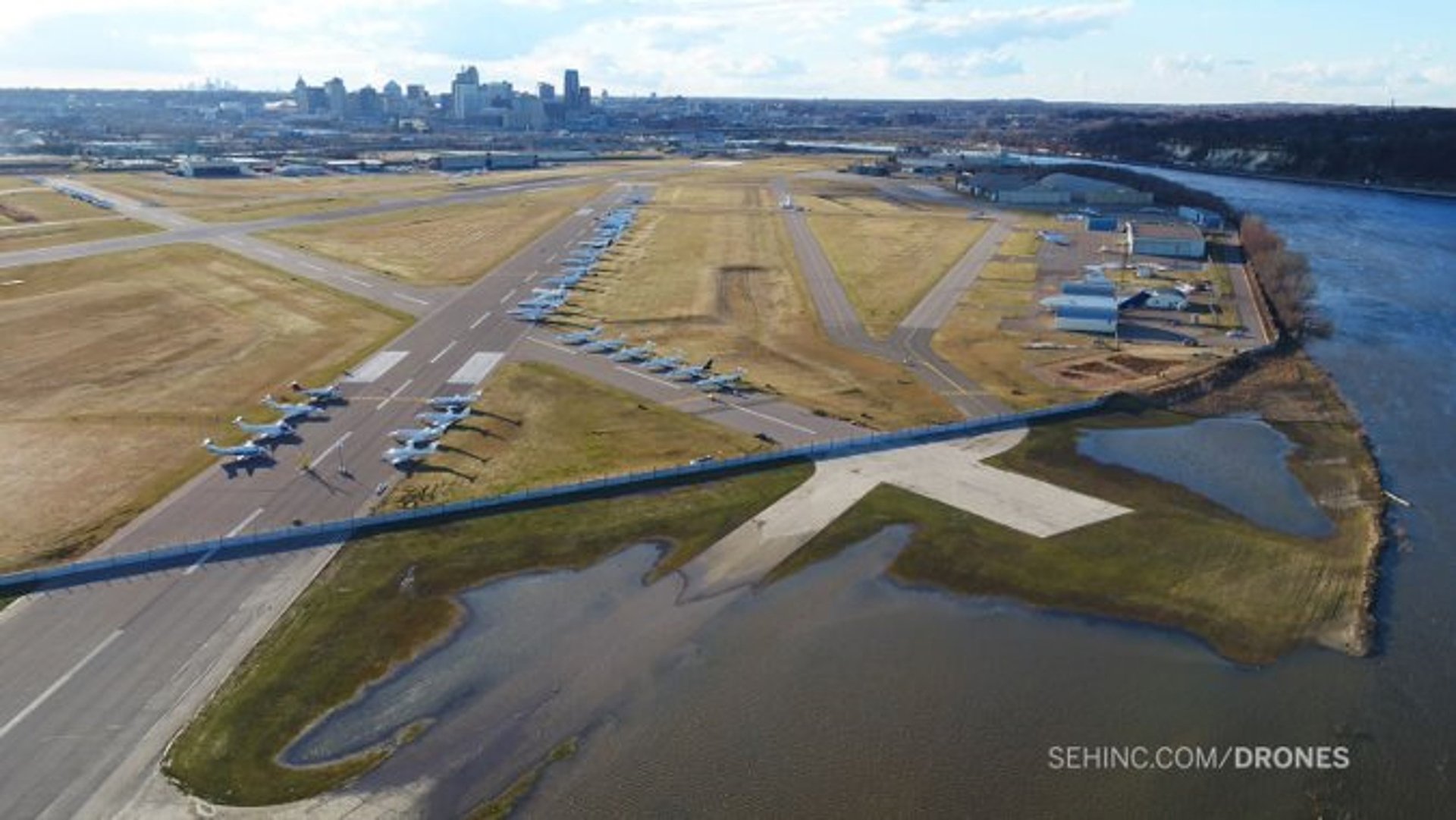From fieldwork to computer flood modeling, Riley Mondloch shares a snapshot of his role as an SEH Water Resources Engineer. Throughout this Q&A, we learn about what led him to water resources engineering, his outlook on the industry, and what gets him excited for the future.
What is a Water Resource Engineer?
A water resources engineer plays a crucial role in managing and protecting one of our most vital natural resources: water. They also play an integral role in addressing environmental challenges such as water pollution and climate change adaptation, working to ensure the long-term sustainability and resilience of our water resources.
Tell us a little bit about yourself and how you got into water resources engineering.
My journey into water resources engineering wasn't exactly a straight line. I was drawn to engineering in high school due to a passion for problem-solving and logical thinking. At first, I started out studying environmental engineering, but along the way, I was increasingly drawn to the intricacies of hydrology and hydraulics. Flood management and stormwater systems particularly fascinated me. Because of this, I decided to pursue my passion for it, which led me to my role today.
Whether it's designing more efficient flood management systems or improving water quality, the impact we can make is tangible and meaningful.
- Riley Mondloch
Why do you enjoy working in this field?
There are many flooding issues to solve, and since I really enjoy problem-solving and figuring things out, it's a great fit. It's not always straightforward, and sometimes it's as simple as putting in a larger pipe. But a lot of the time, if you're dealing with a project in a well-developed area, and there isn't room for simple solutions, it allows me to think outside the box, challenge myself, and get more creative.
Related Content: 4 Steps to an Effective Flood Management Plan
Tell us what an average day at work looks like.
My typical day is a mix of computer-based tasks, with a significant chunk dedicated to flood modeling and report writing. While I do venture into the field occasionally for data collection or troubleshooting, much of my work is conducted remotely, using technology to streamline processes and maximize efficiency. I primarily focus on projects related to stormwater management in Minnesota and Wisconsin, but occasionally I get to work in other states like Colorado and Texas.

What types of challenges do you face in your role?
Sometimes I come across issues related to data collection, budget limitations, and the complexity of modeling large-scale flood events. Accessing accurate and comprehensive data sets is crucial for understanding and predicting water flow patterns, and the availability and quality of such data can sometimes be inconsistent, especially in remote or inaccessible areas. But I thrive on overcoming these obstacles, seeing them as opportunities for growth.

How do you see the role of technology, such as drones, evolving in this field?
Technology, particularly drones, is becoming increasingly important. Drones have revolutionized surveys and data collection, replacing traditional methods with more efficient alternatives. We also use an IBAK camera, which employs advanced technology to provide a comprehensive scan of an entire manhole. It generates a detailed point cloud dataset, allowing us to extract precise information.

What are key skills for this field and what advice would you give someone who wants to pursue a career in water resources?
Essential skills and qualifications include strong problem-solving abilities and an interest in topics such as rivers, hydrology, natural systems, and climate change. Proficiency in technical skills like data analysis, modeling, and computer-aided design (CAD) software is also highly valued. I recommend exploring educational programs, including webinars, looking for internship opportunities, and talking to others in the field. All these sources can provide valuable information, hands-on experience, and networking opportunities.
How do you use your experience to guide your clients?
My approach with clients is all about keeping it real. I understand that there's rarely a one-size-fits-all solution in water resources engineering. So, drawing on my experience, I strive to provide practical options tailored to the specific constraints of each project. This ensures that our clients not only get technically sound solutions but also ones that are financially feasible. Being with SEH has helped me to provide visual maps indicating flood risk areas efficiently and propose solutions to mitigate flooding, assisting clients to understand and plan for potential flood events.
Every project presents its own unique challenges, and it's satisfying coming up with solutions that directly benefit communities.
- Riley Mondloch
What do you enjoy most about working at SEH?
At SEH, it's not just about the technical aspects of our work. What sets us apart is the emphasis on work-life balance and a supportive work environment. While we may be tackling similar challenges to other companies, I feel like we do it in a way that prioritizes employee well-being and collaboration over excessive stress or competition.
What gets you most excited about the future of the water resources industry?
What I love most about this industry is its constant evolution. From technological advancements to a growing focus on climate change adaptation, there's always something new and impactful happening. My drive stems from the increasing intensity and frequency of storms due to climate change, which emphasizes the importance of effective flood management strategies. As challenges like flooding become more prevalent, I see our work becoming even more vital, and that's what drives my passion for the future.

About the Expert

Riley Mondloch, PE*, is a water resources engineer and certified floodplain manager specializing in hydrologic and hydraulic modeling techniques, including one-dimensional (1D) and two-dimensional (2D) models. He has worked on projects including floodplain mapping and hydraulic modeling following FEMA guidelines, complex 1D and 2D RAS and SRH2D models, and urban modeling for community stormwater management systems.
*Registered Professional Engineer in IN, MN, NV, and WI


